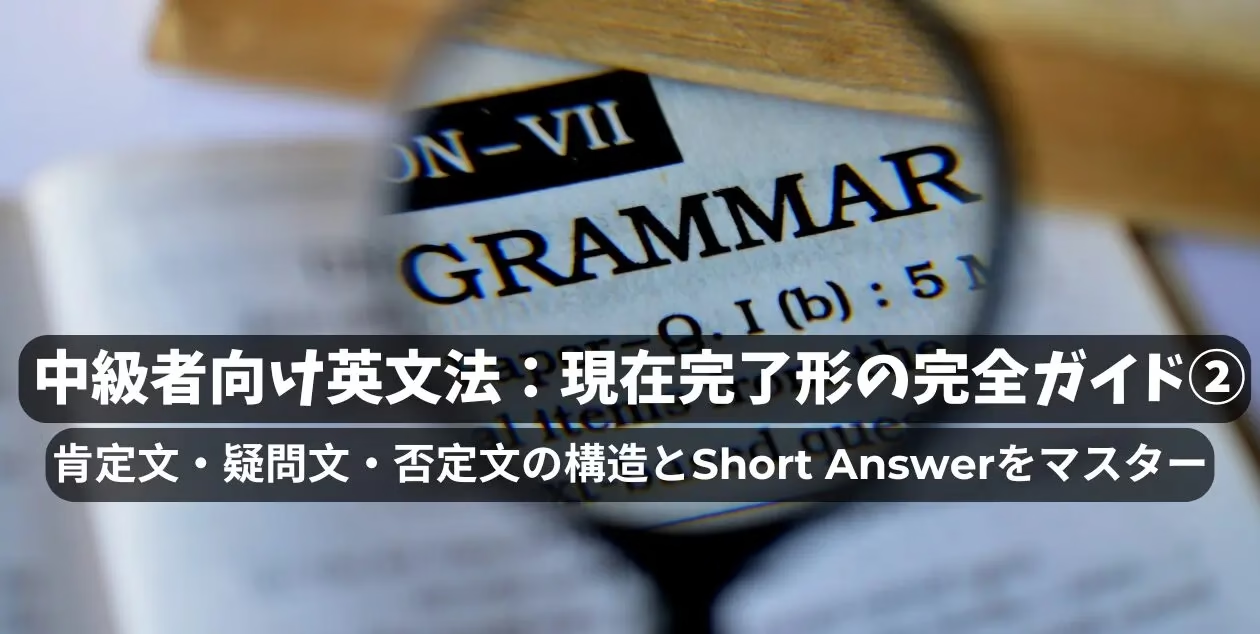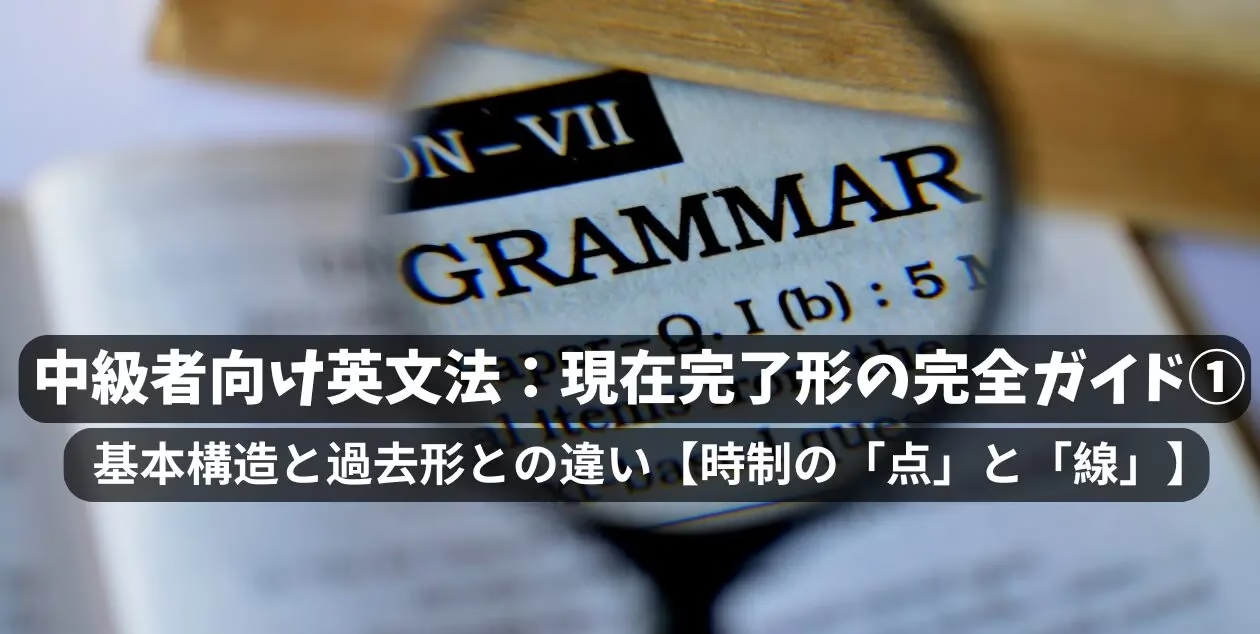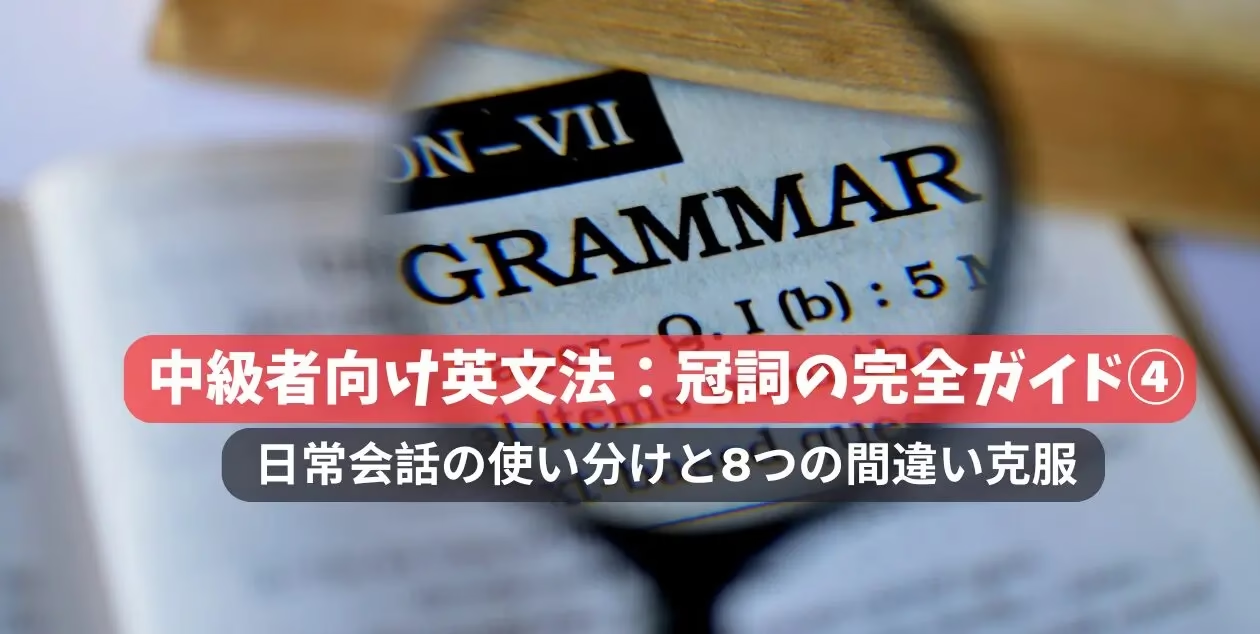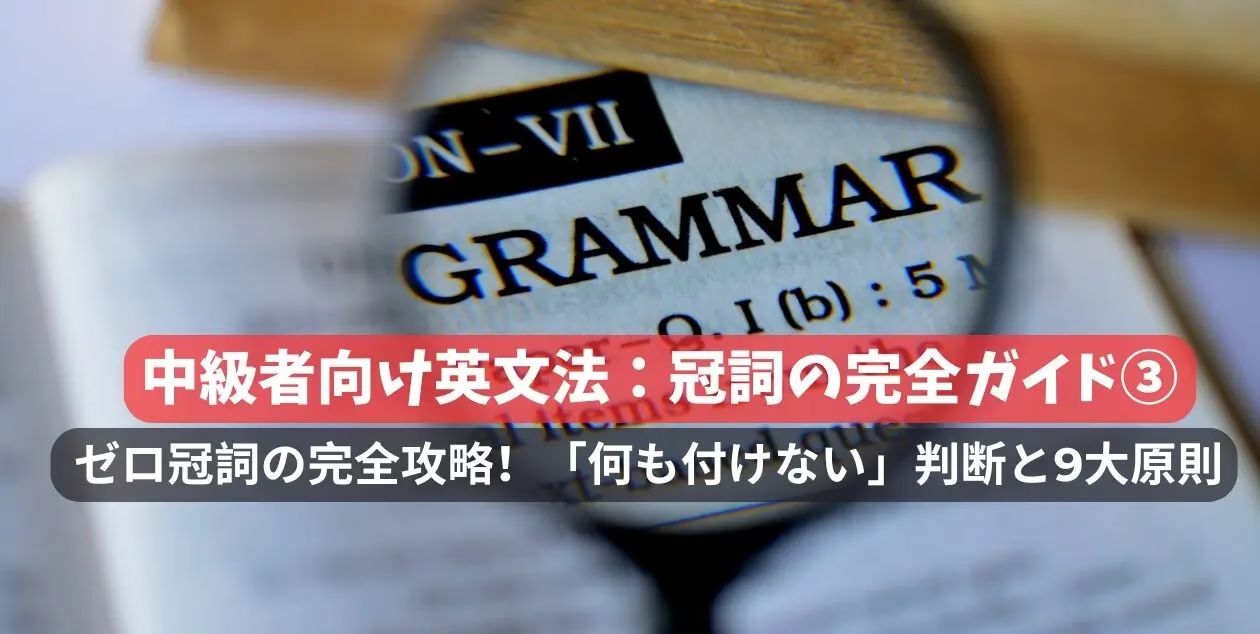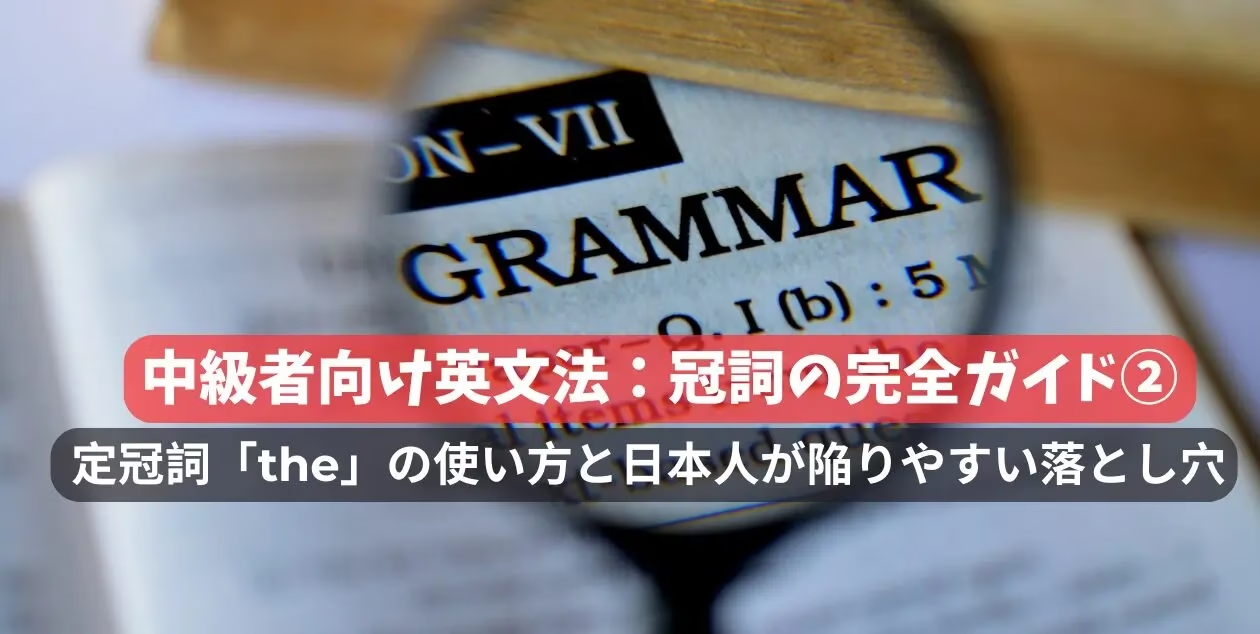音楽は国境を越えて人々をつなぐ普遍的な言語です。しかし、好きな曲について英語で話したいとき、適切な表現が見つからずに苦労した経験はありませんか?このブログでは、音楽について英語で話すために必要な基本用語とフレーズを紹介します。メロディ、リズム、ハーモニーなどの音楽の要素から、曲の構成、有名曲の分析まで、英語で音楽を語るための実践的なガイドをお届けします。
1. 音楽の基本要素:必須ボキャブラリー
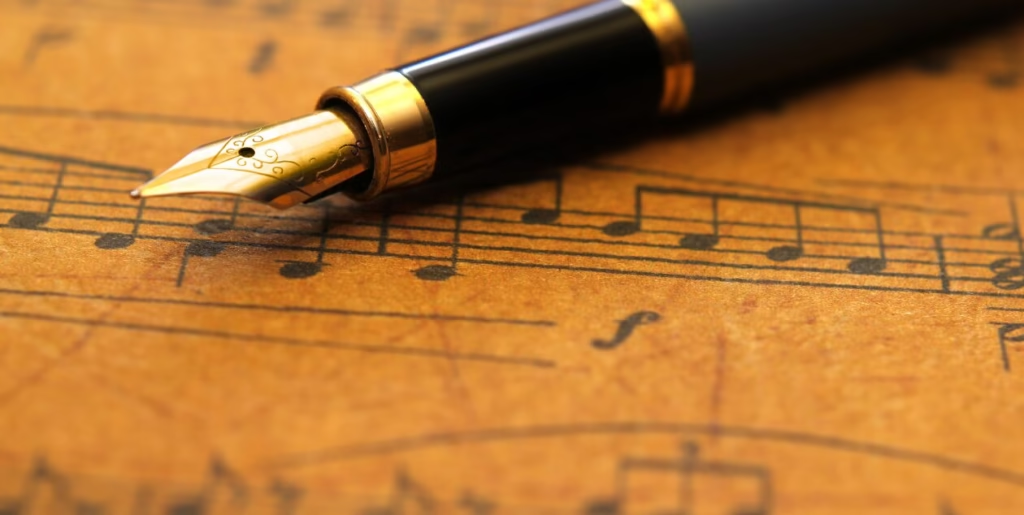
音楽について意味のある会話をするには、基本的な音楽要素についての語彙が不可欠です。ここでは、重要な用語を解説します。
メロディ (Melody)
発音: /ˈmelədi/
意味: 曲の中で連続して奏でられる音の並び。曲の「主旋律」であり、歌や楽器で一番印象に残る部分。
例文:
“The melody of this song is very catchy and easy to remember.”
(この曲のメロディはとても耳に残りやすく、覚えやすいです。)
例文:
“The melody of ‘Let It Be’ by The Beatles is simple but unforgettable.”
(ビートルズの「レット・イット・ビー」のメロディはシンプルですが、忘れられません。)
リズム (Rhythm)
発音: /ˈrɪðəm/
意味: 音楽における音や休符のパターン。音の長さや強弱、繰り返しによって曲の流れやノリを生み出す。
例文:
“The rhythm of this piece makes me want to dance.”
(この曲のリズムは踊りたくなるような感じです。)
例文:
“The rhythm of ‘We Will Rock You’ by Queen is famous for its ‘boom boom clap’ pattern.”
(クイーンの「ウィ・ウィル・ロック・ユー」のリズムは「ドンドンパン」のパターンで有名です。)
ハーモニー (Harmony)
発音: /ˈhɑːrməni/
意味: 複数の音(音程)が同時に鳴ることで生まれる響き。コードや和音とも呼ばれ、曲に厚みや奥行きを与える。
例文:
“The harmony in this choir song is beautiful and rich.”
(この合唱曲のハーモニーは美しく豊かです。)
例文:
“The harmony in ‘Bohemian Rhapsody’ by Queen is complex and impressive.”
(クイーンの「ボヘミアン・ラプソディ」のハーモニーは複雑で印象的です。)
テンポ (Tempo)
発音: /ˈtempoʊ/
意味: 曲の進行スピード(速さ)。BPM(beats per minute)で表され、速いテンポは活発な印象、遅いテンポは落ち着いた印象を与える。
例文:
“The tempo of this song is very fast.”
(この曲のテンポはとても速いです。)
例文:
“‘Flight of the Bumblebee’ by Rimsky-Korsakov is known for its extremely fast tempo.“
(リムスキー=コルサコフの「熊蜂の飛行」は非常に速いテンポで有名です。)
ピッチ (Pitch)
発音: /pɪtʃ/
意味: 音が高いか低いかを示す性質。ピッチはメロディやハーモニーを形作る基本要素。
例文:
“She can sing both high and low pitches.”
(彼女は高い音も低い音も歌うことができます。)
例文:
“The pitch of the opening note in ‘Somewhere Over the Rainbow’ is very high.”
(「虹の彼方に」の冒頭の音はとても高い音です。)
2. 曲の構造:パートごとの解説

音楽の構成要素を理解することで、より詳細に曲について話せるようになります。以下は一般的な曲の構造についての用語です。
イントロ (Intro)
発音: /ˈɪntroʊ/
意味: 曲の最初の部分で、曲の雰囲気やテーマを提示する。
例文:
“The intro sets the mood for the entire song.”
(イントロは曲全体の雰囲気を作ります。)
例文:
“The guitar intro of ‘Sweet Child O’ Mine’ is instantly recognizable.”
(「スウィート・チャイルド・オブ・マイン」のギターイントロはすぐに分かります。)
主節 (Verse)
発音: /vɜːrs/
意味: 歌詞が語られる部分で、物語やテーマが進行する。サビと対比されることが多い。
例文:
“The verse tells the story of the song.”
(主節は曲の物語を語ります。)
例文:
“In ‘Let It Go,’ each verse describes Elsa’s feelings before the chorus.”
(「レット・イット・ゴー」では、各主節がサビの前にエルサの気持ちを描写しています。)
サビ (Chorus)
発音: /ˈkɔːrəs/
意味: 曲の中で繰り返される部分で、最も印象的で覚えやすい。感情のピークとなることが多い。
例文:
“The chorus is very catchy and easy to sing along.”
(サビはとてもキャッチーで一緒に歌いやすいです。)
例文:
“The chorus of ‘We Are the Champions’ is famous all over the world.”
(「ウィ・アー・ザ・チャンピオンズ」のサビは世界中で有名です。)
大サビ (Final Chorus)
発音: /ˈfaɪnəl ˈkɔːrəs/
意味: 曲の最後に繰り返されるサビで、通常よりも盛り上がりが強い。
例文:
“The final chorus is more powerful than the previous ones.”
(大サビは前のサビよりも力強いです。)
例文:
“The final chorus in ‘Let It Go’ is sung with even more energy and emotion.”
(「レット・イット・ゴー」の大サビはさらに力強く感情的に歌われます。)
間奏 (Interlude)
発音: /ˈɪntərluːd/
意味: 歌詞のない楽器だけの部分で、曲の流れをつなぐ役割を持つ。
例文:
“The interlude features a beautiful guitar solo.”
(間奏には美しいギターソロがあります。)
例文:
“The piano interlude in ‘Bohemian Rhapsody’ is very famous.”
(「ボヘミアン・ラプソディ」のピアノ間奏はとても有名です。)
エンディング (Ending)
発音: /ˈɛndɪŋ/
意味: 曲の最後の部分で、曲を締めくくる役割を持つ。
例文:
“The ending of the song is very emotional.”
(この曲のエンディングはとても感動的です。)
例文:
“The ending of ‘Hey Jude’ repeats the phrase ‘na na na’ many times.”
(「ヘイ・ジュード」のエンディングでは「ナナナナ」というフレーズが何度も繰り返されます。)
コード進行(Chord progression)
発音: /kɔːrd prəˈɡrɛʃən/
意味: 曲の中でコードが一定の順序で連続して変化すること。曲の雰囲気や感情の流れを作る重要な要素。
例文:
“The chord progression in this song creates a feeling of tension and release.”
(この曲のコード進行は緊張感と解放感を生み出します。)
例文:
“The chord progression of “Let It Be” by The Beatles is simple and easy to play.”
(「レット・イット・ビー」(ビートルズ)のコード進行はシンプルで弾きやすいです。)
アレンジ(Arrangement)
発音: /əˈreɪndʒmənt/
意味:楽曲の構成や楽器の使い方、演奏スタイルなどを決めること。原曲を基に新たな形に作り変えることも含む。
例文:
“The arrangement of the song features strings and brass instruments.”
(この曲のアレンジには弦楽器と金管楽器が使われています。)
例文:
“The jazz arrangement of “Yesterday” gives the song a completely different feel..”
(「イエスタデイ」のジャズアレンジは曲に全く違う雰囲気を与えています。)
曲調(Mood)
発音: /muːd/
意味:曲が持つ感情的な雰囲気や印象。明るい、暗い、悲しい、楽しいなど多様。
例文:
“The mood of the song is very melancholic.”
(この曲の曲調はとても哀愁があります。)
例文:
“The mood of “Imagine” by John Lennon is peaceful and hopeful.”
(ジョン・レノンの「イマジン」の曲調は平和的で希望に満ちています。)
構成(Structure)
発音: /ˈstrʌktʃər/
意味:楽曲の各部分がどのように組み合わさっているかの全体的な設計。イントロ、主節、サビ、間奏などの配置。
例文:
“The structure of the song includes an intro, verses, chorus, and bridge.”
(この曲の構成はイントロ、主節、サビ、間奏で成り立っています。)
例文:
““Hey Jude” has a unique structure with a long coda at the end.”
(「ヘイ・ジュード」は最後に長いコーダ(エンディング部)がある独特の構成です。)
変調(Modulation)
発音: /ˌmɑːdʒəˈleɪʃən/
意味:曲の途中で調(キー)が変わること。盛り上がりや新鮮さを演出する。
例文:
“The song has a key change, or modulation, before the final chorus.”
(この曲は大サビの前に変調します。)
例文:
“I Will Always Love You” by Whitney Houston features a dramatic modulation near the end.”
(ホイットニー・ヒューストンの「オールウェイズ・ラヴ・ユー」は終盤で劇的な変調があります。)
3. リズムとテンポ:ビートについて語る
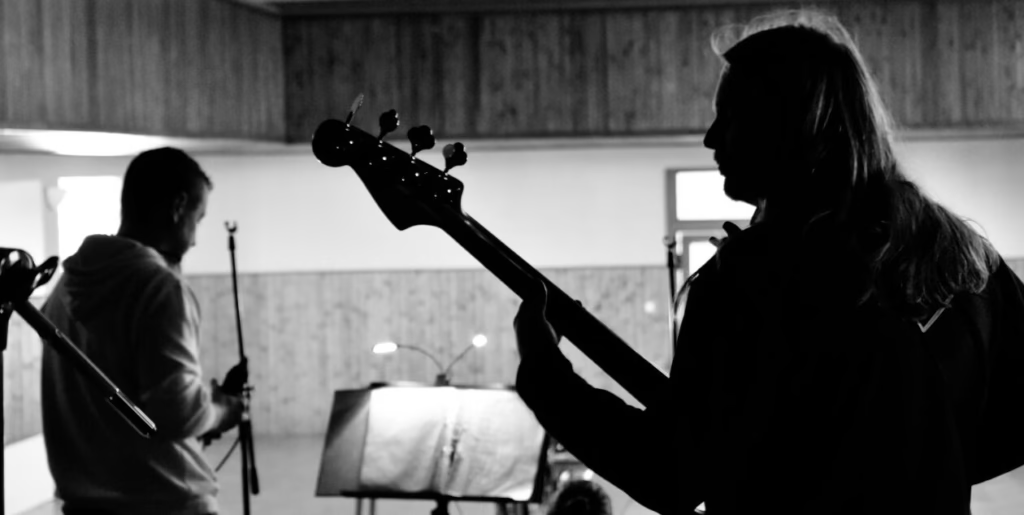
音楽の「ノリ」や「流れ」を表現するための用語を見ていきましょう。
ビート (Beat)
発音: /biːt/
意味: 音楽の中でリズムを刻む最小単位。
例文:
“The drummer emphasizes the off-beat in reggae music.”
(レゲエ音楽ではドラマーが1拍目の裏を強調します。)
グルーヴ (Groove)
発音: /ɡruːv/
意味: リズムやビートが生み出す独特のノリや一体感。
例文:
“This band has a great groove that makes everyone want to dance.”
(このバンドは素晴らしいグルーヴがあって、みんなを踊りたくさせます。)
例文:
“The groove in ‘Superstition’ by Stevie Wonder is legendary.”
(スティービー・ワンダーの「迷信」のグルーヴは伝説的です。)
拍子 (Time Signature)
発音: /ˈtaɪm ˈsɪɡnətʃər/
意味: 楽譜の最初に書かれる記号で、1小節あたりの拍数と拍の種類を示す。
例文:
“The time signature of this song is 4/4.”
(この曲の拍子は4/4です。)
具体的な楽曲例文:
“‘Take Five’ by Dave Brubeck is famous for its 5/4 time signature.“
(デイヴ・ブルーベックの「テイク・ファイブ」は5/4拍子で有名です。)
小節 (Measure)
発音: /ˈmɛʒər/
意味: 音楽の拍子に基づいて区切られた時間の単位。楽譜で縦線で区切られる。
例文:
“The song has 32 measures in total.”
(この曲は全部で32小節あります。)
具体的な楽曲例文:
“‘The main riff in “Smoke on the Water” is played over four measures.”
(「スモーク・オン・ザ・ウォーター」のメインリフは4小節にわたって演奏されます。)
四分音符(Quarter note)
発音: /ˈkwɔːrtər noʊt/
意味: 1小節を4等分する音符。4/4拍子では1拍分の長さ。
例文:
“Each quarter note gets one beat in 4/4 time.”
(4/4拍子では四分音符が1拍分になります。)
具体的な楽曲例文:
“‘The main riff of “Smoke on the Water” is played mostly with quarter notes.”
(「スモーク・オン・ザ・ウォーター」のメインリフは主に四分音符で演奏されます。)
3連符(Triplet)
発音: /ˈtrɪplɪt/
意味: 1拍を3等分するリズムの単位。独特の揺れやスウィング感を生む。
例文:
“Triplets are common in jazz and blues music”
(3連符はジャズやブルースでよく使われます。)
具体的な楽曲例文:
“‘The piano part in “Great Balls of Fire” uses a lot of triplets.“
(「グレート・ボールズ・オブ・ファイア」のピアノパートは3連符が多用されています。)
変拍子 (Irregular Meter / Odd Time Signature)
発音: /ɪˈreɡjələr ˈmiːtər/ /ɑːd ˈtaɪm ˈsɪɡnətʃər/
意味: 標準的な2拍子や4拍子以外(例:5/4、7/8など)の拍子。
例文:
“This song is written in an irregular meter, which makes it sound unique.”
(この曲は変拍子で書かれているので独特の響きがあります。)
例文:
“‘Money’ by Pink Floyd is famous for its 7/4 time signature.“
(ピンク・フロイドの「マネー」は7/4拍子で有名です。)
4. 実践会話例:音楽について話そう

実際に音楽について英語で会話するためのサンプルを見てみましょう。
友人同士のシンプルな会話例
A: I’ve been learning more about music theory lately.
B: Oh, really? Like what?
A: Well, I finally understand the difference between melody, harmony, and rhythm.
B: That’s great! I always get confused about tempo and time signature.
A: Tempo is the speed of the song, and time signature tells you how many beats are in each measure.
B: Got it. And what about things like chord progression and modulation?
A: Chord progression is the order of chords in a song, and modulation is when the key changes.
B: I see. Sometimes I notice a song has a really strong groove or uses triplets to make the rhythm interesting.
A: Exactly! And have you ever noticed how the intro sets the mood, and the chorus is usually the catchiest part?
B: Yeah, and I love when a song has a cool interlude or a dramatic ending.
A: Me too. I want to write a song with an unusual structure and maybe even an irregular meter!
B: That sounds awesome. Let’s try it together!
A:最近、音楽理論を勉強してるんだ。
B:本当?どんなこと?
A:メロディ、ハーモニー、リズムの違いがやっと分かったよ。
B:すごい!僕はテンポと拍子がいつもごっちゃになるんだよね。
A:テンポは曲の速さで、拍子は1小節に何拍あるかを示すんだよ。
B:なるほど。コード進行や変調は?
A:コード進行は曲の中のコードの順番、変調はキーが変わることだよ。
B:そうなんだ。時々、曲にすごくグルーヴがあったり、3連符を使ってリズムが面白くなってたりするよね。
A:そうそう!イントロが曲の雰囲気を作ったり、サビが一番印象的だったりするよね。
B:うん、間奏やドラマチックなエンディングがある曲も好き。
A:僕も。変わった構成や変拍子の曲も作ってみたいな。
B:いいね、一緒にやってみよう!
実際の楽曲を基にした具体的な会話例
A: Have you ever listened to “Bohemian Rhapsody” by Queen?
B: Of course! The melody and harmony in that song are amazing.
A: Yeah, and the structure is so unique. There’s an intro, several verses, a famous chorus, and even an operatic interlude.
B: I love the tempo changes throughout the song. It starts slow, then speeds up during the rock section.
A: Right! And the chord progression is really creative.
B: Did you notice the modulation before the final chorus? It makes the ending even more powerful.
A: Absolutely. The groove in the rock part is so strong, and the use of triplets gives it a dramatic feel.
B: Plus, the time signature changes make it sound so different from regular pop songs.
A: I agree. It’s a perfect example of how melody, rhythm, harmony, and all those musical elements come together in one song.
B: No wonder it’s such a classic!
A:クイーンの「ボヘミアン・ラプソディ」聴いたことある?
B:もちろん!あの曲のメロディとハーモニーはすごいよね。
A:うん、構成も独特だよね。イントロ、いくつかの主節、有名なサビ、オペラ風の間奏まであるし。
B:曲の中でテンポが変わるのも好き。最初はゆっくりで、ロック部分で速くなるんだよね。
A:そうそう、コード進行もすごく工夫されてる。
B:大サビの前に変調があるのも気づいた?エンディングがより盛り上がるよね。
A:本当に。ロック部分のグルーヴも強いし、3連符の使い方もドラマチック。
B:しかも、拍子が変わるから普通のポップスと全然違う感じがするんだよね。
A:同感。メロディ、リズム、ハーモニー、全部の音楽要素が詰まった名曲だよね。
B:だからこそ、あんなに有名なんだね!
5. 有名曲の分析:学んだ表現を使って

学んだ表現を実際に使って、有名な曲を分析してみましょう。少し難しいので、日本語から先に紹介します。
クイーン – “ボヘミアン・ラプソディ” (Queen – “Bohemian Rhapsody”)
クイーンの「ボヘミアン・ラプソディ」は、多様な音楽要素が統合された傑作であり、ポピュラー音楽史において最も分析され称賛される曲の一つです。
メロディ(Melody)は即座に識別できるもので、広範囲のピッチ(Pitch)を横断し、順次進行と跳躍の両方を用いています。フレディ・マーキュリーのボーカルライン、特にオペラ部分では、洗練されたメロディのラインが見られ、抒情的なバラードからドラマチックなロックアンセムへとシームレスに移行しています。
ハーモニー(Harmony)は例外的に豊かで、一般的なポップの慣習に反するコード進行(Chord Progression)を頻繁に使用しています。この曲は協和音と不協和音の両方を特徴とし、オペラ部分のカスケードするコード(Chord)は緊張と解放の感覚を生み出しています。特に、この曲はいくつかのキーを通して変調(Modulation)し、最終コーラス前のドラマチックな変調が感情的な影響を高めています。
リズム(Rhythm)と拍子(Meter)は曲を通して創造的に使用されています。4/4と12/8を含む異なる拍子(Time Signature)の間を移動し、その独特な構造(Structure)に貢献しています。テンポ(Tempo)は静的ではなく、ロックセクションでは加速し、遅いバラードやオペラパートとの対比を提供しています。
ロックセクションのグルーヴ(Groove)は特に強力で、シンコペーションリズムとダイナミックなドラムパターンによって駆動されています。間奏(Interlude)におけるブライアン・メイのギターソロは、速い16分音符(Sixteenth Notes)と表現力豊かなベンドを使用し、ピアノのイントロ(Intro)は最初から不気味なムード(Mood)を設定しています。
この曲のアレンジメント(Arrangement)は非常に革新的で、オペラ風の合唱テクスチャー、ハードロックの楽器、アカペラのパッセージを融合させています。主節(Verse)セクションは物語を語り、コーラス(Chorus)、特に最終コーラス(Final Chorus)は感情的なクライマックスを提供し、層状のハーモニーと力強いエンディング(Ending)によって支えられています。
3連符(Triplets)とシンコペーションの使用に見られる細部への注意が、リズミカルな複雑さと予測不可能性を加えています。ムード(Mood)は内省的で陰鬱なものから、高揚して浄化的なものまで、曲の途中で劇的に変化しています。バラード部分のコード進行は、感情的なナラティブをサポートするのに特に効果的です。
形式的な観点からすると、「ボヘミアン・ラプソディ」は従来のヴァース-コーラス形式を避け、マルチパート構造(イントロ、バラードヴァース、オペラ間奏、ハードロックセクション、そして省察的なエンディング)を採用しています。小節(Measures)とビート(Beats)の使用は緊張を作り出すために操作され、特にオペラとロックのセクションでは、頻繁なシンコペーションと変拍子(Irregular Meters)が特徴です。
まとめると、「ボヘミアン・ラプソディ」は音楽的イノベーションの集大成です。そのメロディ、ハーモニー、リズム、変調、グルーヴ、形式の洗練された使用は、従来のポップソングライティングに挑戦するだけでなく、高度な音楽コンセプトがメインストリームの傑作にどのように織り込まれるかの持続的な例を提供しています。
Review Example: Queen – “Bohemian Rhapsody”
Queen’s “Bohemian Rhapsody” stands as a masterclass in the integration of diverse musical elements, making it one of the most analyzed and celebrated songs in popular music history.
The melody (/ˈmelədi/) is instantly recognizable, traversing a wide range of pitch (/pɪtʃ/) and employing both stepwise and leap motion. Freddie Mercury’s vocal line, particularly in the operatic sections, demonstrates a sophisticated melodic contour, moving seamlessly from lyrical ballad to dramatic rock anthem.
The harmony (/ˈhɑːrməni/) is exceptionally rich, with frequent use of chord progressions (/kɔːrd prəˈɡrɛʃən/) that defy typical pop conventions. The song features both consonant and dissonant intervals, and the cascading chords (/kɔːrd/) in the operatic segment create a sense of tension and release. Notably, the piece modulates (/ˌmɑːdʒəˈleɪʃən/) through several keys, with a dramatic modulation before the final chorus that heightens the emotional impact.
Rhythm (/ˈrɪðəm/) and meter (/ˈmiːtər/) are used creatively throughout. The song shifts between different time signatures (/ˈtaɪm ˈsɪɡnətʃər/), including passages in 4/4 and 12/8, contributing to its unique structure (/ˈstrʌktʃər/). The tempo (/ˈtempoʊ/) is not static; it accelerates during the rock section, providing contrast with the slower ballad and operatic parts.
The groove (/ɡruːv/) in the rock section is particularly strong, driven by syncopated rhythms and dynamic drum patterns. Brian May’s guitar solo in the interlude (/ˈɪntərluːd/) employs rapid sixteenth notes (/sɪkˈstiːnθ noʊt/) and expressive bends, while the piano intro (/ˈɪntroʊ/) sets a haunting mood from the outset.
The song’s arrangement (/əˈreɪndʒmənt/) is highly innovative, blending operatic choir textures, hard rock instrumentation, and a cappella passages. The verse (/vɜːrs/) sections narrate the story, while the chorus (/ˈkɔːrəs/) and especially the final chorus (/ˈfaɪnəl ˈkɔːrəs/) deliver the emotional climax, supported by layered harmonies and a powerful ending (/ˈɛndɪŋ/).
Attention to detail is evident in the use of triplets (/ˈtrɪplɪt/) and syncopation, adding rhythmic complexity and unpredictability. The mood (/muːd/) shifts dramatically throughout, from introspective and somber to exuberant and cathartic. The chord progression in the ballad section is particularly effective at supporting the emotional narrative.
From a formal perspective, “Bohemian Rhapsody” eschews traditional verse-chorus form in favor of a multi-part structure: intro, ballad verse, operatic interlude, hard rock section, and a reflective ending. The use of measures (/ˈmɛʒər/) and beats (/biːt/) is manipulated to create tension, with frequent syncopation and irregular meters (/ɪˈreɡjələr ˈmiːtər/), particularly in the operatic and rock sections.
In summary, “Bohemian Rhapsody” is a tour de force of musical innovation. Its sophisticated use of melody, harmony, rhythm, modulation, groove, and form not only challenges conventional pop songwriting but also provides an enduring example of how advanced musical concepts can be woven into a mainstream masterpiece.
ジョン・レノン – “イマジン” (John Lennon – “Imagine”)
ジョン・レノンの「イマジン」は、平和と希望の力強いメッセージを届けるために基本的な音楽要素を巧みに組み合わせた、時代を超える傑作です。
「イマジン」のメロディ(Melody)はシンプルでありながら記憶に残り、順次進行で動いているため、リスナーが一緒に歌いやすくなっています。ピッチ(Pitch)は主に快適な声域に留まり、曲の普遍的な魅力を高めています。
ハーモニー(Harmony)は控えめで、穏やかなコードがメインのメロディをサポートし、安らぎのある雰囲気を作り出しています。
「イマジン」のコード進行(Chord Progression)は簡潔で、主にC、F、Gコードを使用しています。このシンプルさによって曲のメッセージが際立ち、暖かく招き入れるようなサウンドを与えています。アレンジメント(Arrangement)はピアノをメインの楽器として特徴付け、ソフトな弦楽器と最小限のパーカッションによってサポートされ、歌詞とメロディに焦点を当てています。
曲の構造(Structure)は、クラシックなポップフォーマットに従っています:イントロ、ヴァース、コーラス、エンディング。各ヴァース(Verse)は新しいアイデアを紹介し、コーラス(Chorus)は中心的なメッセージ「Imagine all the people living life in peace」を繰り返します。最終コーラス(Final Chorus)は特に印象的で、レノンの声がより情熱的になり、アレンジメントがわずかに強まります。
リズム(Rhythm)は安定して緩やかで、曲に穏やかで内省的なムード(Mood)を与える優しいグルーヴ(Groove)があります。テンポ(Tempo)は中程度で、拍子(Time Signature)は4/4で、馴染みやすくアクセスしやすい感じを提供しています。ビート(Beat)はピアノの左手によってマークされ、各四分音符(Quarter Note)を強調し、時には優しい動きのために八分音符(Eighth Notes)を使用しています。
この曲は複雑な間奏(Interlude)や楽器ソロを特徴としていませんが、短いピアノのイントロ(Intro)が平和的なトーンを設定し、エンディング(Ending)はリスナーを省察的な状態に残します。ムード(Mood)は希望に満ちた内省的なもので、歌詞のテーマと完全に一致しています。
ドラマチックな変調(Modulation)やキーシグネチャーの変更はなく、曲が安定して統一されていると感じさせます。小節(Measures)は規則的で、変拍子(Irregular Meter)や三連符(Triplet)の使用はなく、曲はリスナーと演奏者の両方にとってアクセスしやすいものになっています。
まとめると、「イマジン」は基本的な音楽要素(メロディ、ハーモニー、リズム、構造、アレンジメント)がどのように組み合わされて、音楽的にも感情的にも強力な曲を作り出すかの見事な例です。その音楽形式とメッセージの両方におけるシンプルさこそが、世代や文化を超えて響く理由です。
Song Review Example: “Imagine” by John Lennon
John Lennon’s “Imagine” is a timeless masterpiece that elegantly combines fundamental musical elements to deliver a powerful message of peace and hope.
The melody (/ˈmelədi/) of “Imagine” is simple yet memorable, moving stepwise and making it easy for listeners to sing along. The pitch (/pɪtʃ/) remains mostly in a comfortable vocal range, which enhances the song’s universal appeal. The harmony (/ˈhɑːrməni/) is subtle, with gentle chords supporting the main tune and creating a soothing atmosphere.
The chord progression (/kɔːrd prəˈɡrɛʃən/) in “Imagine” is straightforward, mainly using C, F, and G chords. This simplicity allows the song’s message to shine while giving it a warm, inviting sound. The arrangement (/əˈreɪndʒmənt/) features piano as the main instrument, supported by soft strings and minimal percussion, which keeps the focus on the lyrics and melody.
The structure (/ˈstrʌktʃər/) of the song follows a classic pop format: intro, verse, chorus, and ending. Each verse (/vɜːrs/) introduces a new idea, while the chorus (/ˈkɔːrəs/) repeats the central message, “Imagine all the people living life in peace.” The final chorus (/ˈfaɪnəl ˈkɔːrəs/) is especially impactful, as Lennon’s voice becomes more passionate and the arrangement intensifies slightly.
The rhythm (/ˈrɪðəm/) is steady and relaxed, with a gentle groove (/ɡruːv/) that gives the song a calm, contemplative mood. The tempo (/ˈtempoʊ/) is moderate, and the time signature (/ˈtaɪm ˈsɪɡnətʃər/) is 4/4, providing a familiar and accessible feel. The beat (/biːt/) is marked by the piano’s left hand, emphasizing each quarter note (/ˈkwɔːrtər noʊt/) and occasionally using eighth notes (/ˈeɪtθ noʊt/) for gentle movement.
Although the song does not feature complex interludes (/ˈɪntərluːd/) or instrumental solos, the brief piano intro (/ˈɪntroʊ/) sets a peaceful tone, and the ending (/ˈɛndɪŋ/) leaves the listener in a reflective state. The mood (/muːd/) is hopeful and introspective, perfectly matching the lyrics’ theme.
There are no dramatic modulations (/ˌmɑːdʒəˈleɪʃən/) or changes in key signature, which keeps the song feeling stable and unified. The measures (/ˈmɛʒər/) are regular, and there are no irregular meters or use of triplets (/ˈtrɪplɪt/), making the song accessible for both listeners and performers.
In summary, “Imagine” is a brilliant example of how basic musical elements-melody, harmony, rhythm, structure, and arrangement-can be combined to create a song that is both musically and emotionally powerful. Its simplicity, both in terms of musical form and message, is what makes it resonate across generations and cultures.
まとめ

音楽について英語で話すことは、英語力を高める楽しい方法であるだけでなく、音楽そのものへの理解も深めてくれます。このブログで紹介した基本的な音楽用語と例文を使って、あなたの好きな曲について友達と英語で語り合ってみてください。
最初は簡単な表現から始めて、徐々に専門的な用語を増やしていくことをお勧めします。曲の「メロディ」や「リズム」について話すところから始め、慣れてきたら「コード進行」や「構造」などの要素にも触れてみましょう。実際の楽曲を例に挙げながら練習することで、より自然な会話ができるようになります。
Remember, practice makes perfect! (練習が完璧を作ります!)
英語で音楽について話す際のヒント
- 好きな曲についての感想をシンプルな英語で表現する練習をしましょう
- 音楽用語を少しずつ会話に取り入れていきましょう
- 洋楽を聴く際に、歌詞だけでなく曲の構造や要素にも注目してみましょう
- 音楽レビューや評論を英語で読んで、表現の幅を広げましょう
- 英語話者と音楽について話す機会を積極的に作りましょう

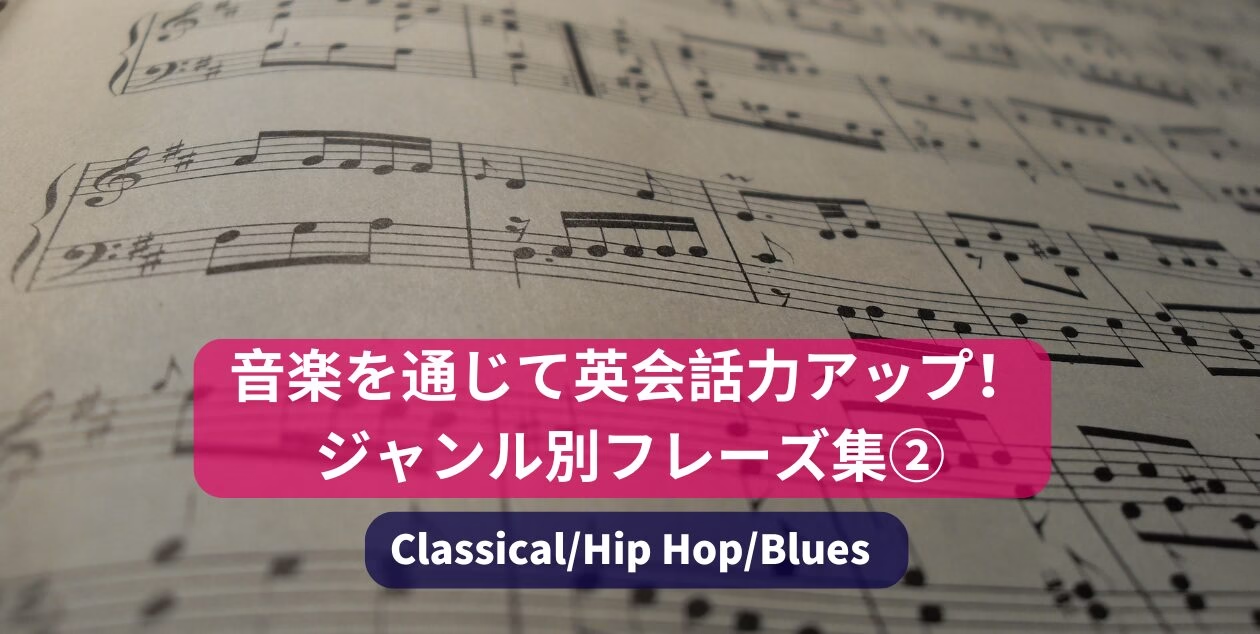




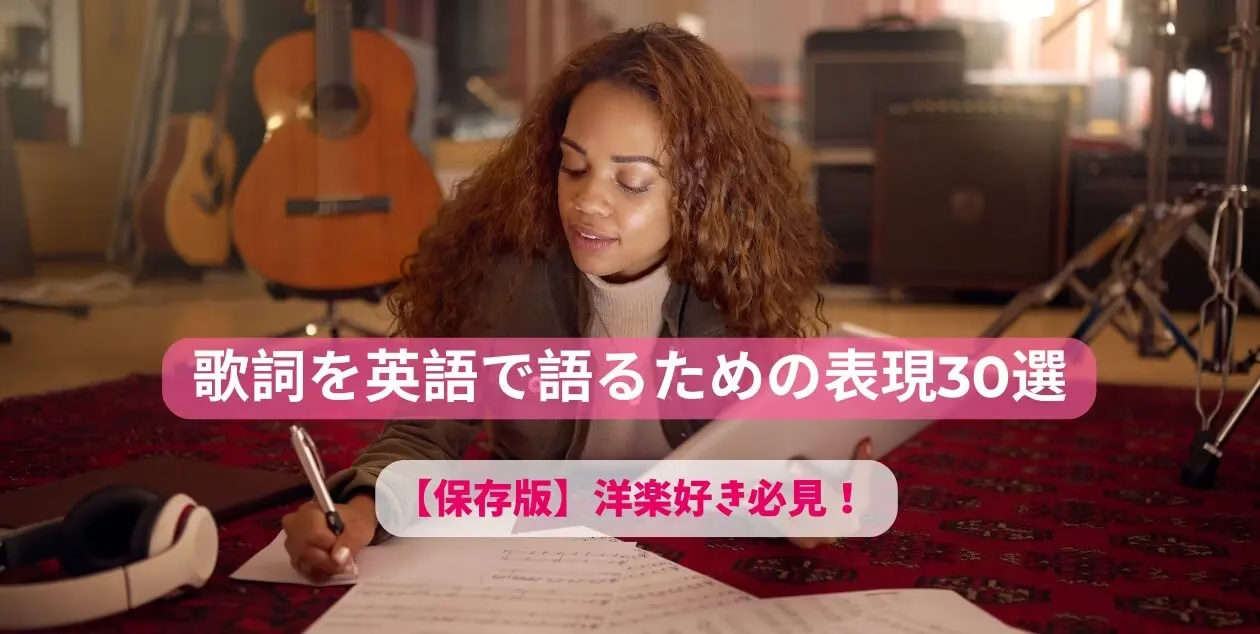



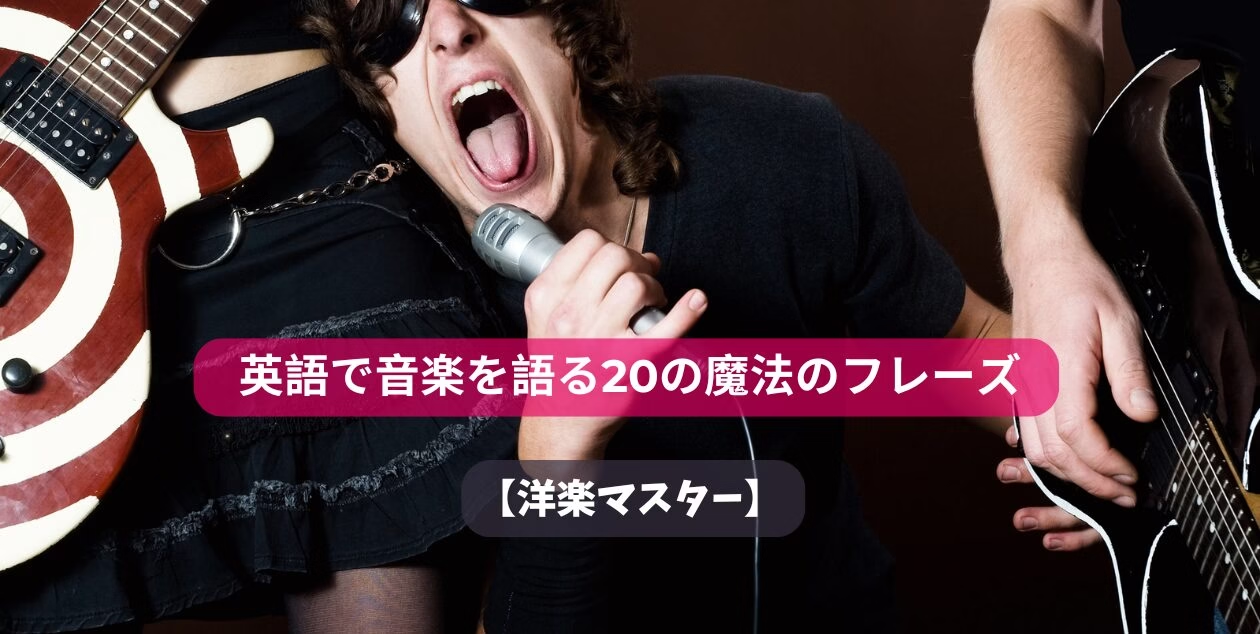

英語・英会話の基礎を学びたい方はこちらから! ↓

語彙力強化したい方はこちらから! ↓

















































